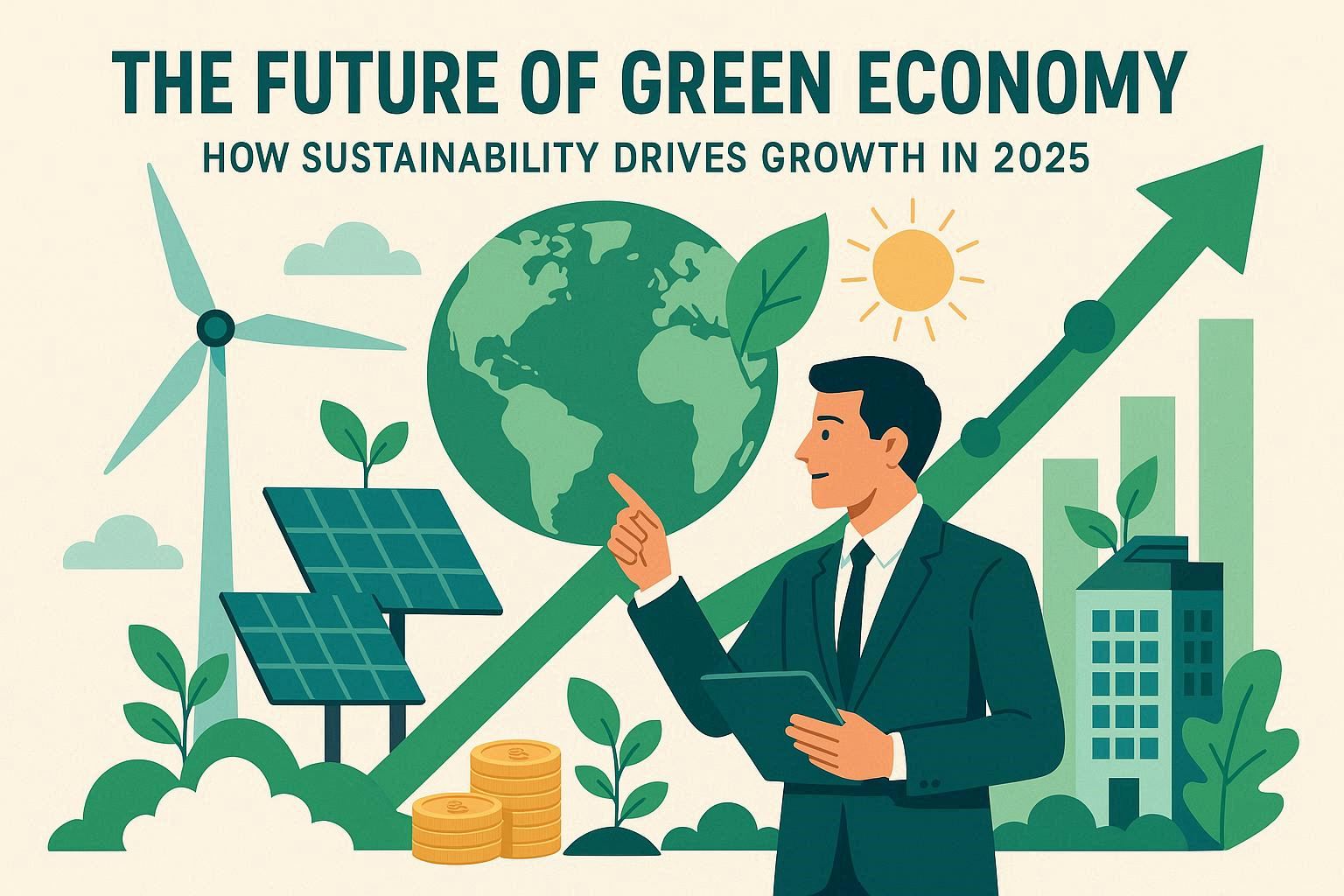The global economy is entering a new era where growth and sustainability go hand in hand. Climate change, resource scarcity, and consumer awareness have pushed governments and businesses to prioritize green economy initiatives. In 2025, sustainability is not only an environmental necessity but also a major driver of economic innovation and opportunity.
This article explores what the green economy means, how it impacts industries and jobs, and why it is central to the future of global development.
1. What Is the Green Economy?
The green economy is an economic model focused on sustainable growth while reducing environmental risks. It emphasizes:
- Renewable Energy – Solar, wind, and hydro replacing fossil fuels.
- Energy Efficiency – Smarter use of resources in homes, transport, and industry.
- Sustainable Agriculture – Eco-friendly farming methods reducing waste and emissions.
- Green Finance – Investment strategies that prioritize sustainability.
2. Economic Benefits of Going Green
- Job Creation – Renewable energy projects and green tech industries employ millions worldwide.
- Cost Savings – Energy-efficient practices lower operational costs for businesses and households.
- Innovation Boost – Green demand drives new inventions in technology, transport, and construction.
- Global Competitiveness – Countries investing in sustainability lead global markets.
3. Key Sectors Driving the Green Economy
- Energy – The transition from coal and oil to solar, wind, and hydrogen.
- Transportation – Electric vehicles (EVs), public transit, and shared mobility systems.
- Construction – Eco-friendly building materials and smart energy-efficient homes.
- Finance – Green bonds and sustainable investment funds gaining popularity.
4. Challenges of the Green Economy
- High Initial Costs – Renewable projects often require large investments.
- Policy Barriers – Governments struggle with balancing short-term costs and long-term benefits.
- Technological Gaps – Developing countries may lack access to advanced green technologies.
- Resistance from Traditional Industries – Oil, coal, and gas sectors slow down the transition.
5. Global Initiatives and Agreements
International agreements such as the Paris Climate Accord and the UN Sustainable Development Goals are guiding nations toward greener economies. Countries like Germany, China, and the U.S. are investing heavily in renewable infrastructure and sustainable industries.
6. The Role of Businesses
Companies adopting green strategies benefit in multiple ways:
- Improved brand image among eco-conscious consumers.
- Lower long-term energy costs.
- Access to green funding and investment opportunities.
- Compliance with stricter environmental regulations.
7. Future Outlook: The Green Economy in 2030
By 2030, experts predict:
- Renewable energy will dominate global electricity generation.
- Most new vehicles sold will be electric or hybrid.
- Sustainable products will become mainstream across industries.
- Countries investing in green technologies will lead global trade.
Conclusion
The green economy is no longer optional—it is essential. While challenges remain, the benefits of sustainable practices for businesses, governments, and individuals are undeniable. In 2025 and beyond, economies that embrace green growth will secure both environmental stability and long-term prosperity.

